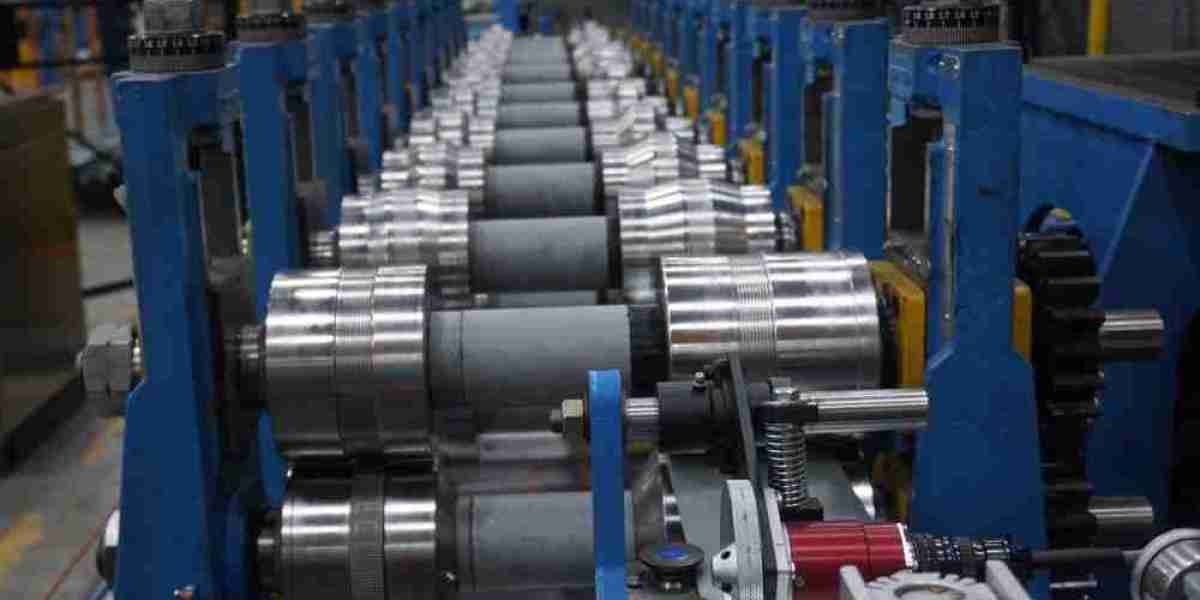In modern construction and architectural design, effective water management is essential. One of the most critical components in any building’s rainwater drainage system is the gutter. To ensure gutters are functional, durable, and aesthetically pleasing, manufacturers rely on advanced machinery — and among the most important of these is the gutter roll forming machine. Known for its efficiency, precision, and versatility, this specialized equipment is revolutionizing how gutters are produced, both in factories and on job sites.
Whether you're a construction professional, a sheet metal fabricator, or an industrial manufacturer, understanding how a gutter roll forming machine works — and why it is vital — can provide a major advantage in delivering high-quality, custom-fit gutter systems efficiently and cost-effectively.
What is a Gutter Roll Forming Machine?
A gutter roll forming machine is an automated system designed to shape flat metal coils into continuous, seamless gutters of various profiles and sizes. It operates by feeding metal sheets through a series of rollers, each of which bends the metal incrementally until the final gutter shape is achieved. This process allows for high-speed production with consistent accuracy, minimal waste, and virtually no manual intervention.
Gutter roll forming machines are typically used to produce residential, commercial, and industrial rain gutter systems made from materials such as galvanized steel, aluminum, copper, and painted steel. The machine is capable of forming various styles including K-style, half-round, box gutters, and custom profiles depending on tooling configuration.
How Does a Gutter Roll Forming Machine Work?
The operation of a gutter roll forming machine involves several stages:
Uncoiling: A coil of flat metal is mounted on the uncoiler. The machine gradually unwinds the coil to feed the material into the next stage.
Feeding and Straightening: The metal sheet is fed into the machine where a straightener ensures it enters the roller stations properly aligned and without curvature.
Roll Forming: The heart of the machine is its series of roll forming stations. Each station features precisely engineered rollers that progressively bend the sheet into the desired gutter profile. Because the bending is incremental, it ensures high precision and reduces the risk of metal fatigue or cracking.
Cutting: Once the gutter profile is fully formed, it is cut to length using a hydraulic or pneumatic cutter. Advanced machines use a flying cut-off system that allows cutting without stopping the machine, improving efficiency.
Stacking or Manual Collection: The completed gutter lengths are then stacked automatically or collected manually, ready for packaging or installation.
Key Features of a Gutter Roll Forming Machine
Modern gutter roll forming machines come with a variety of advanced features designed to enhance productivity, safety, and quality. These include:
PLC Control Systems: Enables full automation, customizable profiles, and quick changeovers between different lengths and shapes.
Touchscreen Interface: Allows operators to monitor performance, adjust settings, and troubleshoot problems easily.
Hydraulic Cutting Mechanism: Ensures clean, burr-free cuts and enhances productivity.
Variable Speed Drive: Offers flexibility for different materials and thicknesses, maximizing control over production output.
High-Quality Rollers: Made from heat-treated steel or alloy materials for long-term durability and consistent forming.
Benefits of Using a Gutter Roll Forming Machine
1. Precision and Consistency
Because the forming process is automated and progressive, every gutter length produced is uniform in shape and size. This level of consistency is essential for projects where aesthetics and functional performance are equally important.
2. High Efficiency
The continuous operation of a gutter roll forming machine makes it far more efficient than manual forming or traditional fabrication methods. It can produce long lengths of gutter in a fraction of the time, significantly increasing productivity.
3. Material Versatility
These machines can work with multiple metals including galvanized steel, copper, aluminum, and zinc. This versatility makes it easy to meet specific project requirements without needing separate machinery for each material type.
4. Cost Savings
Cold-forming technology reduces waste, minimizes labor costs, and increases throughput — all of which contribute to lower overall manufacturing expenses. Additionally, the long service life of the machine ensures a high return on investment.
5. Custom Profile Capabilities
With modular designs and adjustable tooling, gutter roll forming machines can be tailored to produce a wide variety of gutter styles and sizes, meeting diverse architectural and regional standards.
Common Applications of Gutter Roll Forming Machines
Gutter roll forming machines are widely used across various sectors due to their versatility and reliability:
Residential Buildings: Produces gutters that enhance curb appeal and protect homes from water damage.
Commercial Properties: Offers custom-fit solutions for larger roof areas, ensuring proper drainage for office buildings, warehouses, and shopping centers.
Industrial Facilities: Capable of producing heavy-duty gutters suitable for large factories and manufacturing plants.
OEM and Custom Fabricators: Helps suppliers meet custom orders with unique gutter profiles or premium materials like copper or pre-painted aluminum.
Factors to Consider When Choosing a Gutter Roll Forming Machine
Investing in the right machine is critical to maximizing efficiency and product quality. Here are key aspects to evaluate:
Material Compatibility: Ensure the machine can process the types and thicknesses of metal you plan to use.
Production Volume: Choose a machine that matches your operational capacity — from small-batch custom fabrications to high-volume continuous production.
Automation Level: Advanced automation reduces manual errors and increases operational efficiency.
Customization Options: Machines with adjustable tooling or multi-profile capabilities offer more flexibility for diverse projects.
Maintenance and Support: Select a manufacturer that offers after-sales service, training, and easy access to replacement parts.
Future of Gutter Manufacturing with Roll Forming Technology
As the construction industry evolves, there is a growing demand for more sustainable, efficient, and high-performing building systems. Gutter roll forming machines are at the forefront of this shift, offering automated, precision-based solutions that support green building practices by minimizing waste and energy consumption.
With the integration of smart technologies like remote monitoring, IoT sensors, and data analytics, future roll forming machines are expected to become even more intelligent. These innovations will enable predictive maintenance, quality control in real-time, and adaptive forming strategies based on project-specific data.
Conclusion
The gutter roll forming machine is an essential piece of equipment for any manufacturer or contractor involved in rainwater system production. With its ability to produce seamless, high-quality gutters quickly and cost-effectively, it stands as a cornerstone of modern metal fabrication. Its versatility, reliability, and efficiency make it a valuable investment for businesses looking to deliver top-tier products in an increasingly competitive construction market.








